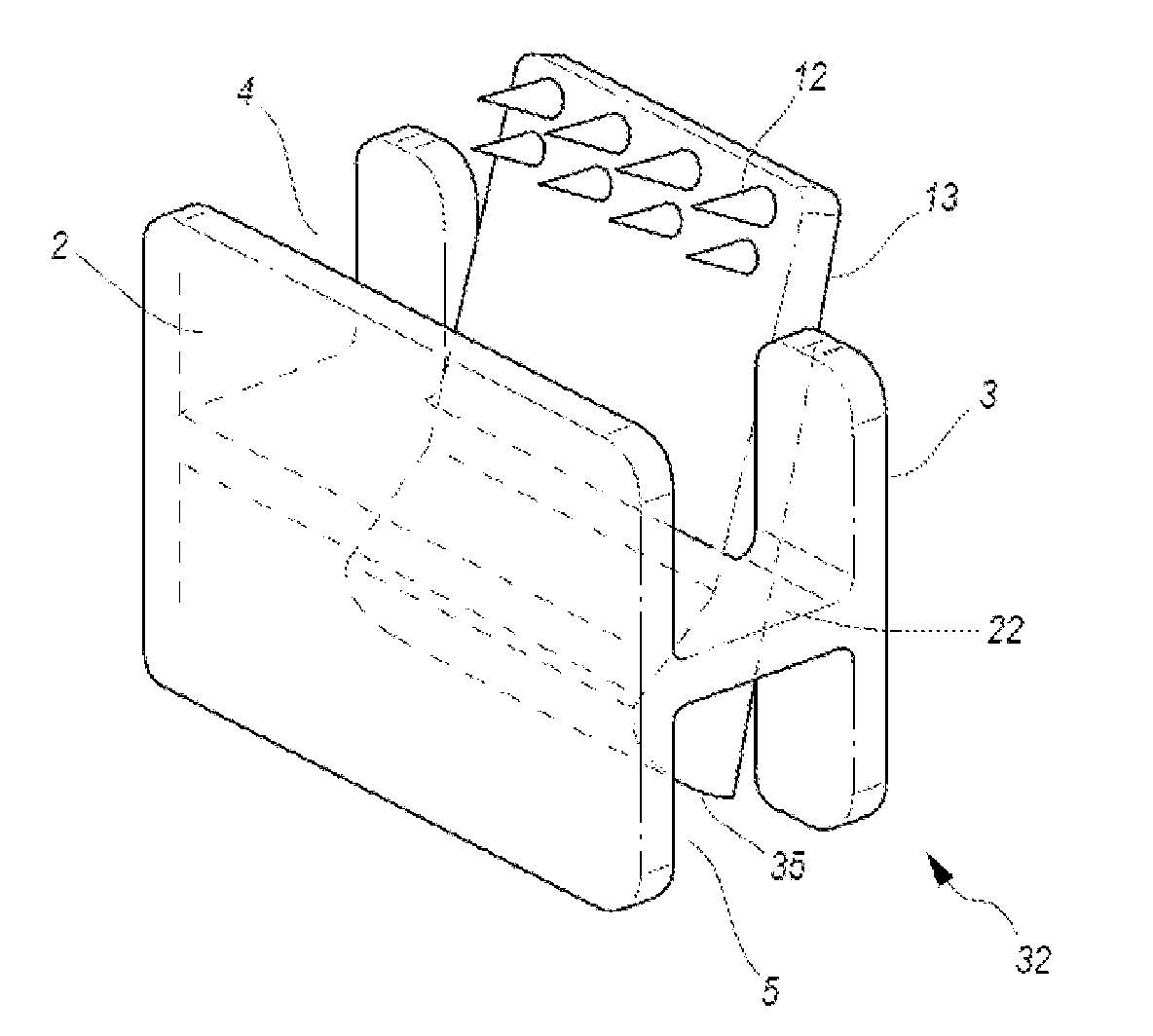Device and Methods for Treatment of Temporomandibular Joint (TMJ) Disorder
- Summary
- Abstract
- Description
- Claims
- Application Information
AI Technical Summary
Benefits of technology
Problems solved by technology
Method used
Image
Examples
embodiment 44
[0093]FIG. 14 illustrates a side view perspective of the above described embodiment 44 which includes upper and lower jaw channels 4, 5 respectively, and outer 60 and inner 61 face plates. The irritation spines 63 are provided as well as the spine guard 62.
embodiment 45
[0094]FIGS. 15A and 15B illustrate a related embodiment 45 of the invention in which the inner face plate is adjustable in order to accommodate a variety of sizes and in order to provide a wearer the ability to adjust the sensitivity in which mild irritation begins upon onset of bruxing. Specifically, FIG. 15A shows the inner face plate placed onto the flexible casing 59, which make up the upper 4 and lower 5 jaw channels. Adjustment pegs 65 attached to the flexible casing latch onto adjustment slots 67 located on the inner face plate 68 and fit into adjustment holes located thereon 66. The irritation spines are also provided 63 with a flexible tooth guard 62 to prevent excessive irritation.
[0095]FIG. 15B illustrates how the dental device may be adjusted. To adjust the device, the inner face plate 68 is removed and placed into a position on the adjustment pegs 65 which provides the optimal fit and level of sensitivity with regard to the individual wearer.
embodiment 46
[0096]FIGS. 16A and 16B illustrate a related embodiment 46 to that previously described. Specifically, the illustration provides a device in which the irritation spines for the lower portion of the outer face plate 73 and are adjustable 72 in order to accommodate different sizes in individuals. The ability to adjust the spines also allows the wearer to adjust the level of sensitivity of the device.
[0097]For example, the spines of the device may be shortened so that during waking hours, the spines are require more tooth grinding before irritation begins. This ability allows the wearer to live a more normal daily life while keeping the device in place and preventing bruxing. Likewise, a second device may be adjusted to keep spines long so that a lower degree of bruxing is required for mild irritation to begin. This allows the user to be alerted to the onset of bruxing promptly and develop habits that will establish healthy sleeping.
[0098]FIG. 16B illustrates the device during tooth gr...
PUM
 Login to View More
Login to View More Abstract
Description
Claims
Application Information
 Login to View More
Login to View More - R&D
- Intellectual Property
- Life Sciences
- Materials
- Tech Scout
- Unparalleled Data Quality
- Higher Quality Content
- 60% Fewer Hallucinations
Browse by: Latest US Patents, China's latest patents, Technical Efficacy Thesaurus, Application Domain, Technology Topic, Popular Technical Reports.
© 2025 PatSnap. All rights reserved.Legal|Privacy policy|Modern Slavery Act Transparency Statement|Sitemap|About US| Contact US: help@patsnap.com



